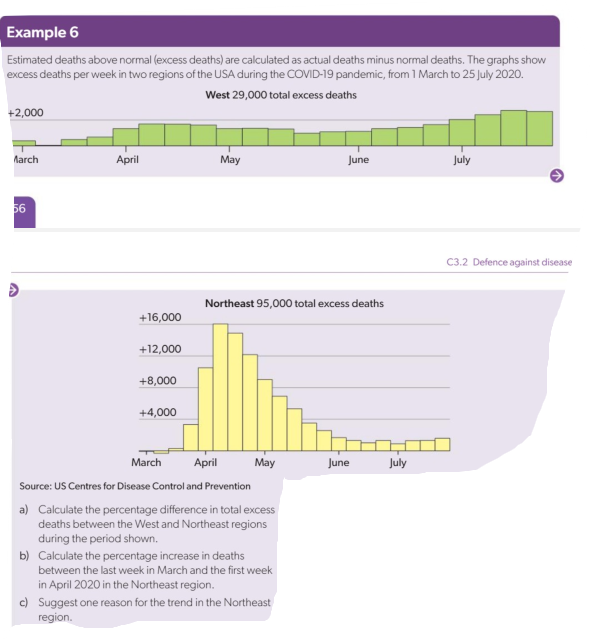C3.2 Defence against Diseases
1/11
There's no tags or description
Looks like no tags are added yet.
Name | Mastery | Learn | Test | Matching | Spaced |
|---|
No study sessions yet.
12 Terms
What are pathogens.
Pathogens refer to the living organisms that cause diseases.
What are primary defence of pathogens for humans
Skin and
Mucous membrane (moist, linner lining of a body which is exposed to outside, such as lungs, nose and stomach)
Mucous produced by the membrane contains many lysozyme enzyme which kills many bacteria
Explain the clotting process
The platelets are attracted to the wounded tissues,
The platelets releases clotting factors
The Clotting factors initiate a cascade of reactions (products of a reaction is an enzyme for the next reaction to take place)
This ensures that the clotting happens only when its neccesary and it happens rapidly.
The penultimate reactions produces thrombin
Thrombin converts fibrinogen (soluble plasma protein), into long protein fibre called Fibirin
Fibrin forms a mesh of fibres across wounds.
Blood cells are caught in the mesh and form semi-solid clot
When the clot is exposed to air, the clot forms scab which prevents pathogen from entering the body.
Compare and Contrrast innate immune system and adaptive immune system
Innate immune system is
non-specific
Chemical, physical and cellular defence
fast and does not last long
Adaptive immune system is
specific
takes longer to acquire but lasts long
Describe the function of Phagocytes
Phagocytes are cells in innate immune system
Have amoeboid movement from blood to the site of infection.
Then the phagocytes detects pathogens and engulf them to by endocytosis.
The pathogens in phagocytes are digested with lysosomes.
Describe the function of lymphocytes
Lymphocytes are in adaptive immune system that cooperate to produce Antibodies
Lymphocytes circulate in blood and contained in lymph nodes.
B-lymphocytes are abundant and used to produce many types of antibodies.
What is a function of Memory cell and Plasma cell produced from B - lymphocytes.
Memory cell’s function is to
remember
the antigens
how to produce respective antibodies.
Also to
stay in body as long as possible.
Plasma cell’s function is to
Produce as many antibodies as possible.
Explain How the immunity works in mammals.
B - lymphocytes are activated by T - lymphocytes
Activated B-lymphocytes multiply and differenciate into clones of plasma cells and memory cells.
Once the pathogen is marked with antibodies, the pathogen such as bacteria is destroyed by phagocytes by phagocytosis.
How is HIV, transmitted and what are the effects of the HIV.
HIV is transmitted through body fluids such as
Blood
Salaiva
Semen
Breast Milk
Effects of HIV are
reduces the number of T- lymphocytes and
causes the loss of ability to produce antibodies
This leads to a Acquired immune deficiency syndrome(AIDS).
AIDS is characterized by immunosuppression that gives raise to
infection,
tumours
central nervous system degeneration.
What is antibiotics and explain how bacterium can develop the resistance to it.
How Antibiotic works
Antibiotics are chemicals produced by living organisms (fungi) or produced synthetically.
They block processes that occur in prokaryotes but not in eukaryotic cells.
How bacterium can develop resistance to them
some bacterium mutate and develop the resistance to said antibiotics. And due to the selection pressure, the bacterium with resistance survive and eventually the ones with resistance grow in numbers.
What is Zoonosis
Zoonoses are animal infections that can reach humans through different modes,
Such as COVID-19, Tuberculosis, Rabies and Japanese encephalitis.

Question hint
Answer
